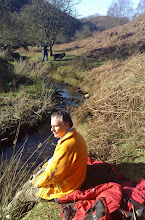Poems can be constructed in either free verse or formal verse. Most poets today write free versewhich is open to pattern and is recognized as nonconforming and rhyme less verse. Metrical verse relies on stanza length combined with meter or rhyme patterns distinct to itself. There are several traditional commonly-known forms of poetry.
Haiku, a form of Japanese descent, consists of three lines of five, seven, and five syllables respectively, and traditionally deals with nature subjects.
A sonnet, whether of English or Italian rhyming scheme, is a single- or two-stanza lyric poem containing fourteen lines written in iambic pentameter. Shakespeare's love sonnets are well-known.
Most journals of literary note do not embrace traditional rhyme and form poetry, preferring the more commonly used free verse which is not bound by any rules of meter and rhyme. Unless you're the Earl of Rochester or Alexander Pope, it would be best to stick with the unconventional verse. Here are some traditional types ofpoetry and free forms:
Sestina - The sestina is a six 6-line stanzas followed by a 3-line stanza. There is a predetermined pattern in that the same six words are repeated at the end of lines throughout the poem. The last word in the last line of one stanza becomes the last word of the first line in the next stanza. Then rounding it off with the final 3-line stanza, all six end words appear. You may want to read some of Sylvia Plath's sestinas to familiarize yourself with this form.
Two forms that are closely related to each other are the villanelle and the pantoum. The villanelle, a nineteen-line poem, is made up of five 3-line stanzas and one 4-line stanza (or quatrain) at the end of the poem. Alternating between the ends of each tercet (3-line stanza) there are two refrains that eventually end up forming the last two lines of the quatrain. Dylan Thomas's "Do Not Go Gentle Into That Good Night" is an example of a villanelle. The pantoum is comprised totally of quatrains. In each stanza the second and fourth lines are repeated in the first and third lines of the following stanza, until the final stanza where the first line is the poem's first and the second line is the poem's third line. "Evening Harmony" by Charles Baudelaire is an example of a pantoum.
Free verse does come in various forms, the most common being driven by cadence in which common language rhythm is substituted for regular metrical pattern, which can be seen in the works of Walt Whitman and the King James Bible versionof The Psalms and The Song of Solomon.
A second type of free verse is free iambic verse which was used by such poets as T.S. Eliot and W.H. Auden.
A third form is the free verse proper, the most used form, where the inconsistency is at the center of the poem. There is no set metrical rhyme or patterns of meter and rhythm. Unlike traditional verse, free form is not constrained by the rules regulating syllables in stanzas.
There is often confusion as to what is meant by visual poetry. If you have written a very descriptive poem about a whale, it may be a wonderful free verse poem, but not visual. If you have written the same poem and the presentation of the piece is in the shape of a whale, you have written a visual poem.
If you'd like further information about poetry terms, take a look at John Drury's "The Poetry Dictionary." It defines key terms that should be in the vocabulary of every poet. Above all, keep writing! Poetry provides a wonderful outlet for observation, exploration, and healing.
Thursday, 7 January 2010
Free or Formal
Subscribe to:
Post Comments (Atom)

No comments:
Post a Comment